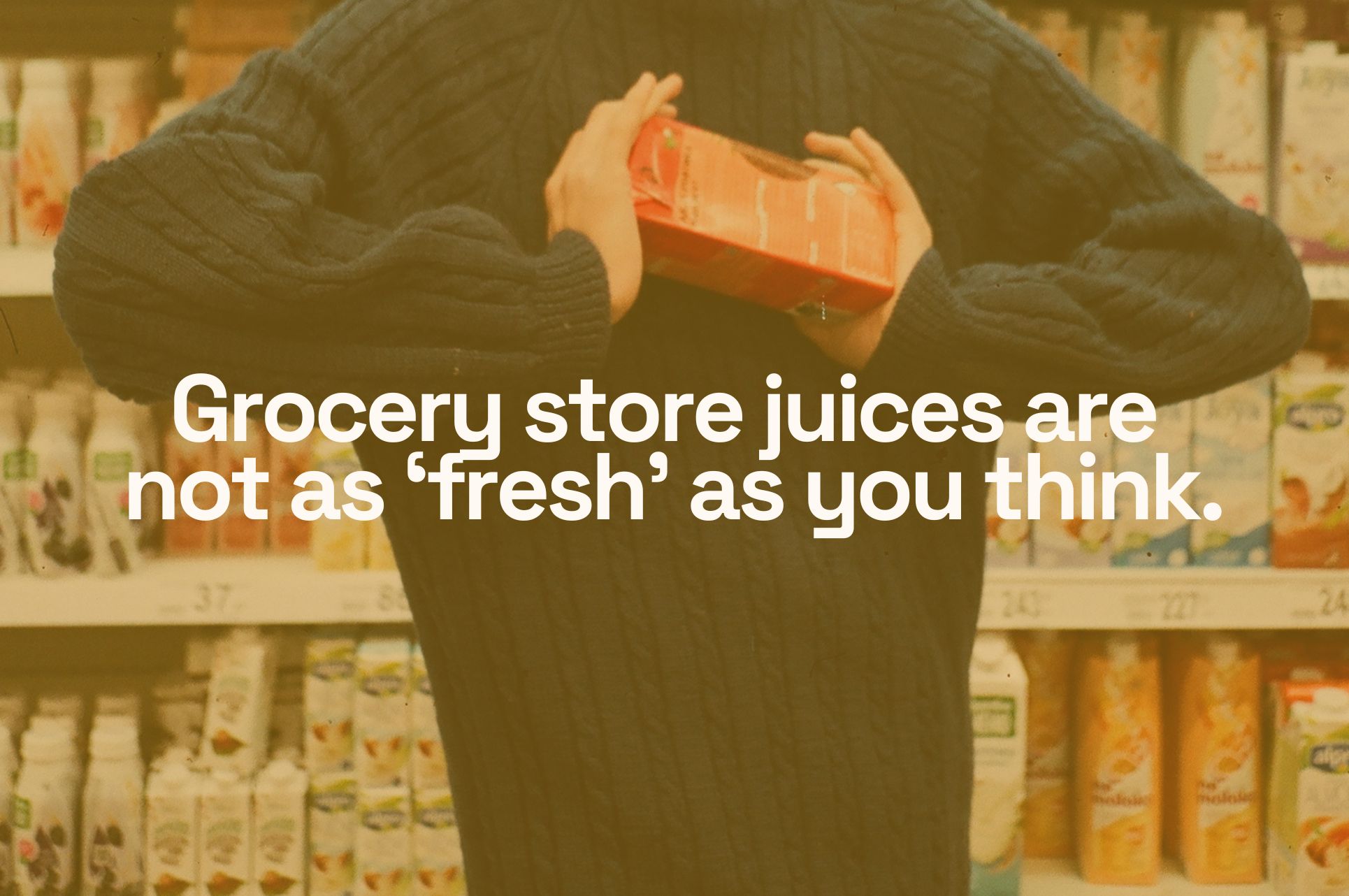🍊 Is Drinking Store-Bought Juice the Same as Drinking a Fresh Juice?
Not quite. Many health-conscious shoppers are unaware that most juices found on grocery store shelves have gone through industrial processing techniques that significantly strip away their natural benefits.
Why It Matters
To stay on shelves for weeks (or even months), most bottled juices undergo one of two methods: Thermal Pasteurization (TP) or High-Pressure Processing (HPP). While both extend shelf life, they come at a nutritional cost.
Here’s how store-bought juices compare to truly fresh, cold-pressed juice like ours at Seaside Juicery:
| Juice Type | Shelf Life | Nutrient Retention |
|---|---|---|
| 🧃 Cold-Pressed & Bottled Fresh (Our Way) | 3–5 days | 🔋 Retains 100% of natural nutrients |
| 🔥 Cold-Pressed & Thermal Pasteurized (TP) | 14 days to several months | ❌ Up to 90% nutrient loss |
| 💨 Cold-Pressed & High-Pressure Processed (HPP) | 30 days to several months | ⚠️ Loses 25% in 30 days, up to 67% over time |
The Science Behind the Sip
Studies show that both TP and HPP significantly reduce antioxidant activity in juice. In fact, by day 36, processed juice can have up to 67% less antioxidant activity than fresh juice (source: 2018 study on long-term effects of juice processing).
While these methods stabilize bacteria and extend shelf life, they drastically reduce the nutritional value of the juice you’re drinking.
The Seaside Juicery Difference 🌱
At Seaside Juicery, our juices are:
-
Cold-pressed daily, with no HPP or pasteurization
-
Bottled immediately to reduce oxidation
-
Kept refrigerated and sold within 24–48 hours
-
Packed with live enzymes, natural vitamins, and powerful antioxidants
We use organic produce, ethical sourcing, and eco-conscious methods to ensure every sip supports your body and the planet.
 English
English
 Français
Français


